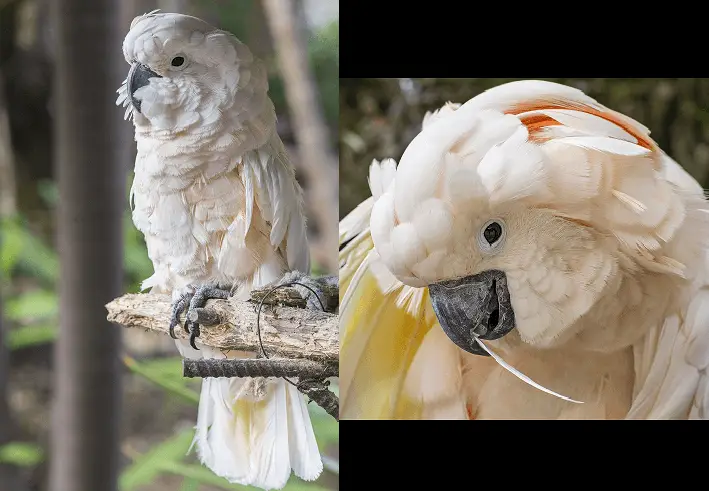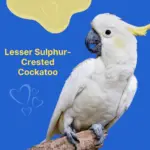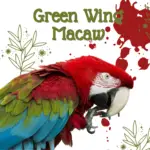
Moluccan Cockatoo with a partially raised hood
In their area of distribution, the Moluccan Cockatoo is sometimes considered to be an agricultural pest. They are particularly feared because they eat the semi-ripe seed heads of the coconut palm and can thus substantially damage the crop yield.
Appearance
Moluccan cockatoos reach a body length of 52 centimeters. They are therefore one of the large cockatoo species. The basic color of the Moluccas is white. Individual animals also have a pink sheen over their plumage.
Both sexes are distinguished by the pink hood, the color of which is particularly clearly visible when it is set up. Some Moluccan cockatoo also has yellowish-colored feathers on the inside of the wings and in the tail feathers area. The beak is large and black.
The feet are gray-black and look like scales. This pattern becomes larger towards the toes, with the claws being black. Moluccan cockatoos have a white featherless ring around the eyes.
Salmon-crested cockatoos
SOURCE:Rumble Viral
The Salmon-crested cockatoo Health diet and care
SOURCE:ChloeSanctuary
| Reign | Animalia |
|---|---|
| Branch | Chordata |
| Class | Aves |
| Order | Psittaciformes |
| Family | Cacatuidae |
| Kind |
Description
50 cm long, it is the largest bird of the genus Cacatua. The female is a little larger than the male. He has pinkish-white plumage with a dash of red, light yellow under the wings, and a large crest that he straightens up when he feels threatened to frighten the opponent. It has a loud cry and, in captivity, it is a good imitator.
Distribution and habitat
This bird is endemic to the southern Moluccas, where it is present on Céram and the neighboring islands of Ambon, Saparua, and Haruku. It lives in tropical rain forests, below 1000 m altitude.
Moluccan cockatoo diet
Its diet consists mainly of seeds, nuts, and fruits.
Moluccan Cockatoo Distribution and habitat
The main distribution area of the Moluccan Cockatoo is the Indonesian island of Seram, an island east of New Guinea, around 350 kilometers long and a maximum of 50 to 60 kilometers wide. In the middle of the island, there is a mountain range up to 3,000 meters high, which the Moluccan cockatoos avoid. They can only be observed up to an altitude of about 1000 meters above sea level. The islands of Saparua and Haruku, both of which are located off the southwestern coast of Seram and are between 300 and 400 square kilometers in size, are largely populated by Moluccan cockatoos. A tropical, humid climate without strong seasonal fluctuations is characteristic of the distribution area.
In many areas, they have already been wiped out. The population in the wild is estimated at around 2000 animals. The reason for the high risk is the lively wild bird trade, mainly with the western world. In addition, the natural habitat of the Moluccan Cockatoo is becoming more and more restricted and the forests and wetlands are being destroyed.
In their natural range, Moluccan Cockatoos can be found in forest areas, swamp areas, and other biotopes. Inhabited areas are not accepted.
Salmon-crested cockatoos
SOURCE:ChloeSanctuary
Salmon-crested cockatoo

Pictures of Moluccan cockatoo
Salmon-crested cockatoo Diet and lifestyle
Moluccan cockatoos live in pairs or in small schools. They are diurnal birds that go to their feeding grounds in the morning after a short cleaning and calling phase. It is characteristic of Moluccan Cockatoos that they usually fly just above the treetops. A second, intensive phase of foraging is in the afternoon. In between, the Moluccan cockatoos rest in the treetops, doze or take care of their plumage.
The food spectrum of the Moluccas extends to all possible and seasonally available wild seeds, herbs, and fruits. When it comes to fruit, mostly only the meat is eaten and the peel is left over. Wood is also very popular. This is also essential for bill wear.
It can be assumed that Moluccan Cockatoos form a very close pair bond in the wild. The partners spend their entire lives together. However, it is unclear whether a new pair will be formed if a partner is lost.
The Salmon-crested cockatoo
Moluccan Cockatoo
SOURCE:RelaxCallMax
Moluccan Cockatoo Behavior and reproduction
Since Moluccan cockatoos are very socially living birds, they are often found in small to medium groups. The couples probably pursue the breeding business separately and alone, but probably always in the vicinity of the group. It can also be assumed that all sexually mature animals in the group start breeding at the same time. The animals are extremely shy and cautious and, if disturbed, they flee. Secure field observations are still not available. The voice of the Moluccan Cockatoo is very penetrating. But they are also able to whistle and imitate some other noises. Your language skills are rather underdeveloped. Most of the Moluccas can only learn and reproduce a few words of the human language.
In the wild, the breeding season begins, which for us falls in the summer months. Two broods are possible. Their breeding caves are at great heights; the caves are probably very deep. The egg clutch consists of two to three eggs.
Moluccan Cockatoo baby Hatching
SOURCE:Parrot House
The Salmon-crested cockatoo Pet keeping
Moluccan cockatoos were for a time very frequently in the trade in North America and Europe as wild-caught. At times more than 6,000 Moluccan Cockatoos were caught and traded each year. The species is now considered endangered and has been listed in Appendix I of the CITES agreement since 1989. Since then, the trade-in wild-caught has been illegal. Trading inbred Moluccan Cockatoos is only permitted with the corresponding CITES certificates. However, illegal catches and trafficking in this cockatoo species continue, for which high prices are paid.
Moluccan Cockatoos are considered to be demanding fosterlings who often develop a close bond with a specific person in the family. Their very large gnawing drive is problematic in keeping them. The ornithologist Dieter Hoppe, who specializes in parrots, points out that a Maluku male he held even destroyed an aviary cage made from 1.5-millimeter thick sheet metal with welded seams that were specially made by a locksmith. Basically, only keeping them in pairs in large aviaries is considered species-appropriate today.
How to Stop a Moluccan Cockatoo From Screaming | Training
SOURCE:BirdTricks
Moluccan cockatoo for sale near me
Moluccan cockatoo for sale craigslist
Moluccan cockatoo for sale
Moluccan Cockatoo Adoption a Rescue Bird
Moluccan cockatoo for adoption
SOURCE:Meet Our Flock
Moluccan cockatoo price
How Much Does Moluccan cockatoo parrot Cost? $1000 to $2000 for your Moluccan Cockatoo.




















